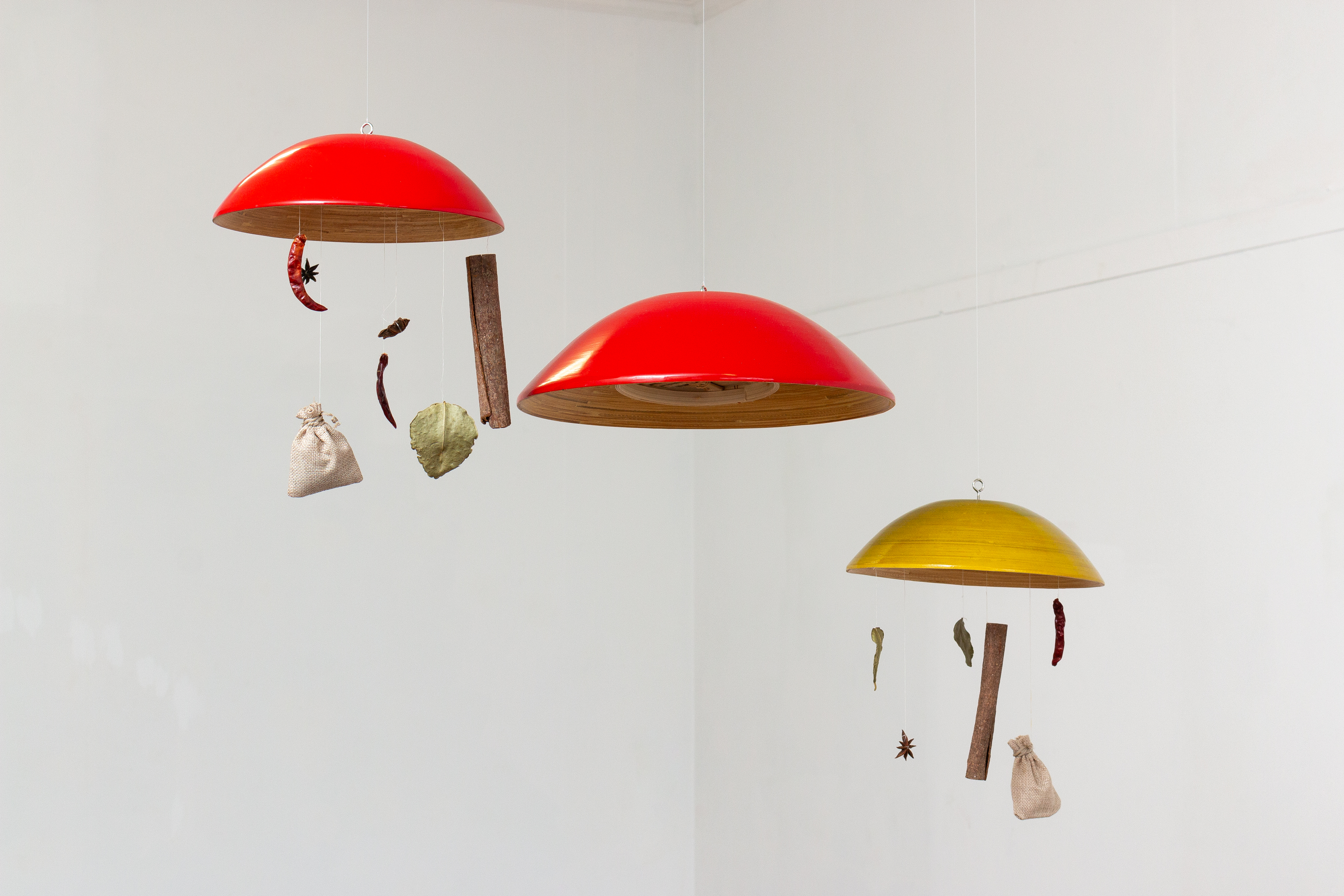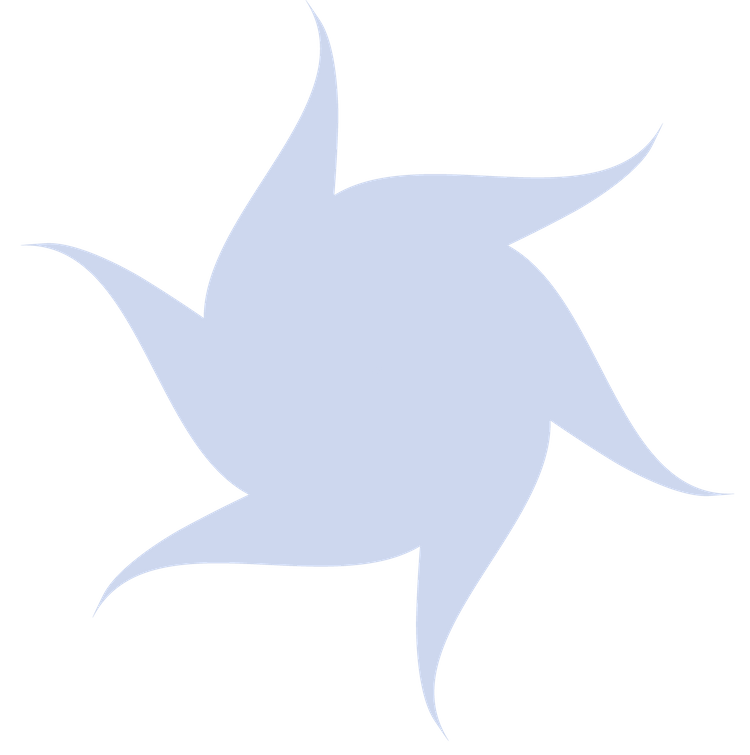
Olfactory landscapes
Osmologies by Jo Burzynska
Osmologies | Jo Burzynska | Blue Oyster, Ōtepoti
05.08.23 | written by Wesley John Fourie
At the opening of Jo Burzynska’s Osmologies at Blue Oyster Art Project Space, I notice a dog and its owner are standing outside the gallery—the dog transfixed, sniffing at the door. While a common sight, due to smell being their primary sense, this dog is experiencing the key feature of the current exhibition.
For Osmologies, Dr. Jo Burzynska has created a series of scent portraits. These portraits have involved distilling various ingredients to emulate the scent memories of a group of Ōtautahi’s locals. A series of sculptures are suspended from the ceiling and walls to activate both the eyes and noses of audiences; imbued into each sculpture is an olfactory experience, one the audience must lean into, sniff, and in some instances, engage with through touch.
For Osmologies, Dr. Jo Burzynska has created a series of scent portraits. These portraits have involved distilling various ingredients to emulate the scent memories of a group of Ōtautahi’s locals. A series of sculptures are suspended from the ceiling and walls to activate both the eyes and noses of audiences; imbued into each sculpture is an olfactory experience, one the audience must lean into, sniff, and in some instances, engage with through touch.
 Jo Burzynska, Osmologies, 2023. Installation view.
Jo Burzynska, Osmologies, 2023. Installation view.
Upon entering the gallery, I am hit with the amalgamation of these scent profiles, a sweet, slightly synthetic cloud that sits somewhere between a Glade air freshener and Orto Parisi’s Seminalis. On first encounter, the bouquet which fills the space is overwhelming. I feel a bit like I’m standing in a MECCA store, attempting to discern the difference between perfume samples despite the sensory overstimulation. Thankfully, within a few minutes I grow acclimatised to the marriage of these disparate fragrances, and I can begin my journey through the aromatic topography of the exhibition. Objects are perfumed with scents ranging from spices, makrut lime, fish, faecal matter and body odour, to rotting trash to name a few. Jo encourages viewers not to think about these smells as being “good” or “bad”. We are instead asked to question what these smells activate within us, what memories they conjure up, and how they make us feel.
Within Burzynska’s olfactory landscape, I can’t help but wonder whose faces are behind these portraits, and where they sit in relation to one another. All are residents of Ōtautahi, but are from various ethnic, sensory, gender, and neurodiverse backgrounds. I find it impossible to not try and visualise the people behind each of the scents I’m smelling, as well as what memories these scents hold to each participant. Smell, by default, will always transport us to a different time and place, but here I am also drawn into different worlds, of each of the participants of Jo’s experiment.
Within Burzynska’s olfactory landscape, I can’t help but wonder whose faces are behind these portraits, and where they sit in relation to one another. All are residents of Ōtautahi, but are from various ethnic, sensory, gender, and neurodiverse backgrounds. I find it impossible to not try and visualise the people behind each of the scents I’m smelling, as well as what memories these scents hold to each participant. Smell, by default, will always transport us to a different time and place, but here I am also drawn into different worlds, of each of the participants of Jo’s experiment.
 Jo Burzynska, Teri, 2023. Milk powder, washing powder, soap, MDF, rubber, cotton, metal, soft toy, and plastic baubles.
Jo Burzynska, Teri, 2023. Milk powder, washing powder, soap, MDF, rubber, cotton, metal, soft toy, and plastic baubles. My want for a visual portrait of these participants is flipped on its head when I enter the rear gallery. The space is devoted entirely to the scent profile of one participant, Charlie, who is blind, thus significantly more reliant on her sense of smell as a means of navigating the world. Charlie’s installation is without question what leaves the strongest impression on me, for both its immersive qualities and for allowing us to dip into a perspective guided by something other than what our eyes can see. My experience in the rear gallery decentres vision as my primary sense, and I am held by the experience of what I am smelling, rather than seeing.
The installation includes smells of a home–a fireplace, a garden, roasted meat–as well as the site where she was institutionalised. I find myself feeling a kind of distress I have never experienced by looking at art, only looking. Yet I still find myself compelled by it, and can’t help but actually be drawn into the way this distress smells. In Charlie’s installation, we are invited to step into a shroud that hangs from the ceiling, permeated with the scent of urine/ammonia, rubber, and sulphurous cabbage. Dangling from the ceiling next to the fabric work hangs a Snoopy soft toy, stuffed with the scent of powder milk and laundry detergent. The materiality of these works, juxtaposed with the sadness of their origin, subvert my associations with the warmth and comfort of nostalgia, and hold me in the room as I try to reground myself after the sensory rollercoaster of the first room.
I am confronted by this show due to my inability to speak exclusively to what I am seeing. This show encourages the audience to engage in a way that is physical, multi-sensory, and draws upon our own memories as well as those of others. When we smell things, we absorb their molecules into us, and I quite like the idea that this show has the capacity to be absorbed by, and to absorb, each and every person who encounters it.

Article image: Jo Burzynska, Nico, 2023. Scent, cinnamon bark, chilli, kaffir lime leaves, star anise, muka, hessian, bamboo, and cotton.
Photos: Lindsey de Roos.
Jo Burzynska, Osmologies, 2023. 22 July – 2 September 2023 at Blue Oyster, Ōtepoti.
The installation includes smells of a home–a fireplace, a garden, roasted meat–as well as the site where she was institutionalised. I find myself feeling a kind of distress I have never experienced by looking at art, only looking. Yet I still find myself compelled by it, and can’t help but actually be drawn into the way this distress smells. In Charlie’s installation, we are invited to step into a shroud that hangs from the ceiling, permeated with the scent of urine/ammonia, rubber, and sulphurous cabbage. Dangling from the ceiling next to the fabric work hangs a Snoopy soft toy, stuffed with the scent of powder milk and laundry detergent. The materiality of these works, juxtaposed with the sadness of their origin, subvert my associations with the warmth and comfort of nostalgia, and hold me in the room as I try to reground myself after the sensory rollercoaster of the first room.
I am confronted by this show due to my inability to speak exclusively to what I am seeing. This show encourages the audience to engage in a way that is physical, multi-sensory, and draws upon our own memories as well as those of others. When we smell things, we absorb their molecules into us, and I quite like the idea that this show has the capacity to be absorbed by, and to absorb, each and every person who encounters it.
Article image: Jo Burzynska, Nico, 2023. Scent, cinnamon bark, chilli, kaffir lime leaves, star anise, muka, hessian, bamboo, and cotton.
Photos: Lindsey de Roos.
Jo Burzynska, Osmologies, 2023. 22 July – 2 September 2023 at Blue Oyster, Ōtepoti.
ISSN 2744-7952
Thank you for reading ︎
Vernacular logo designed by Yujin Shin
vernacular.criticism ︎

